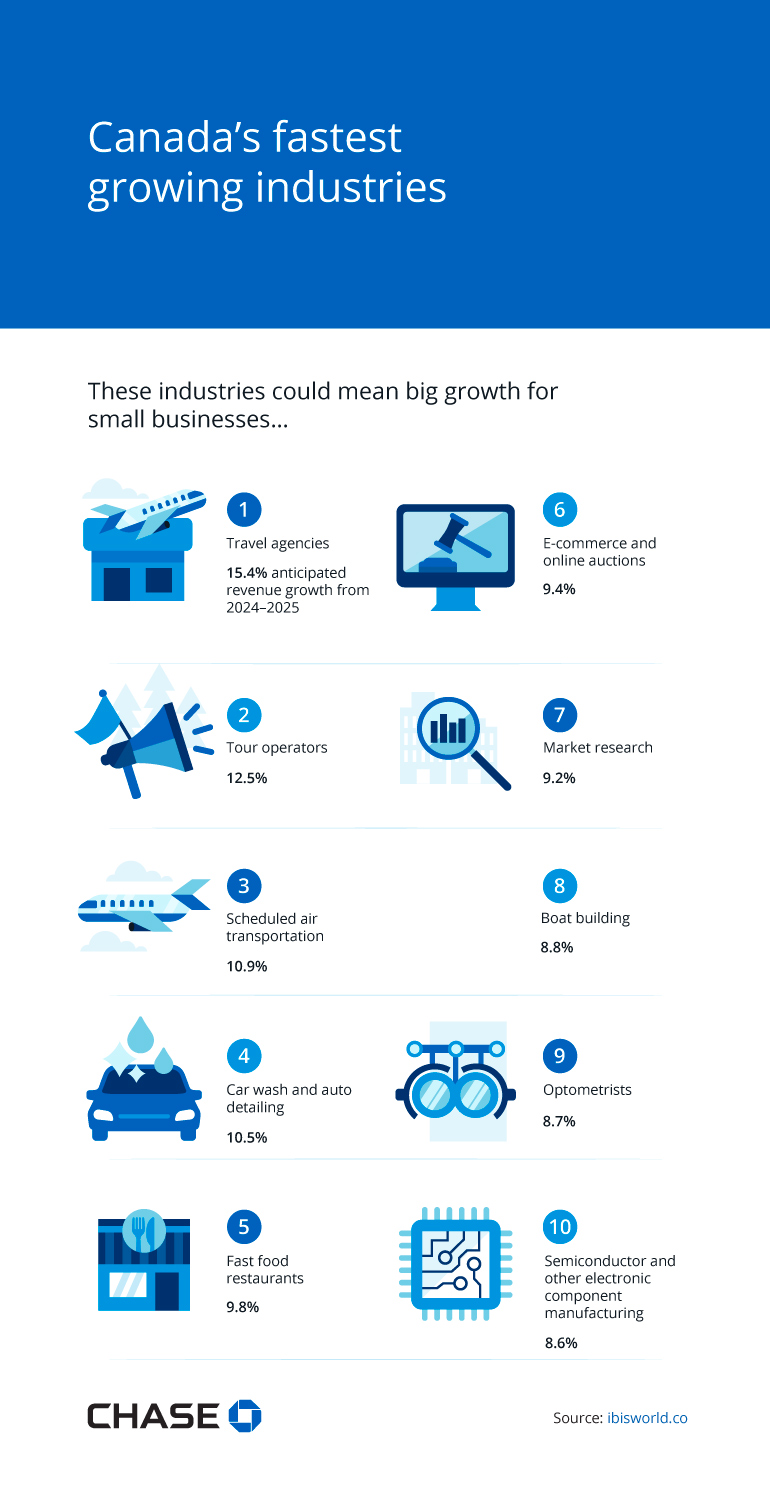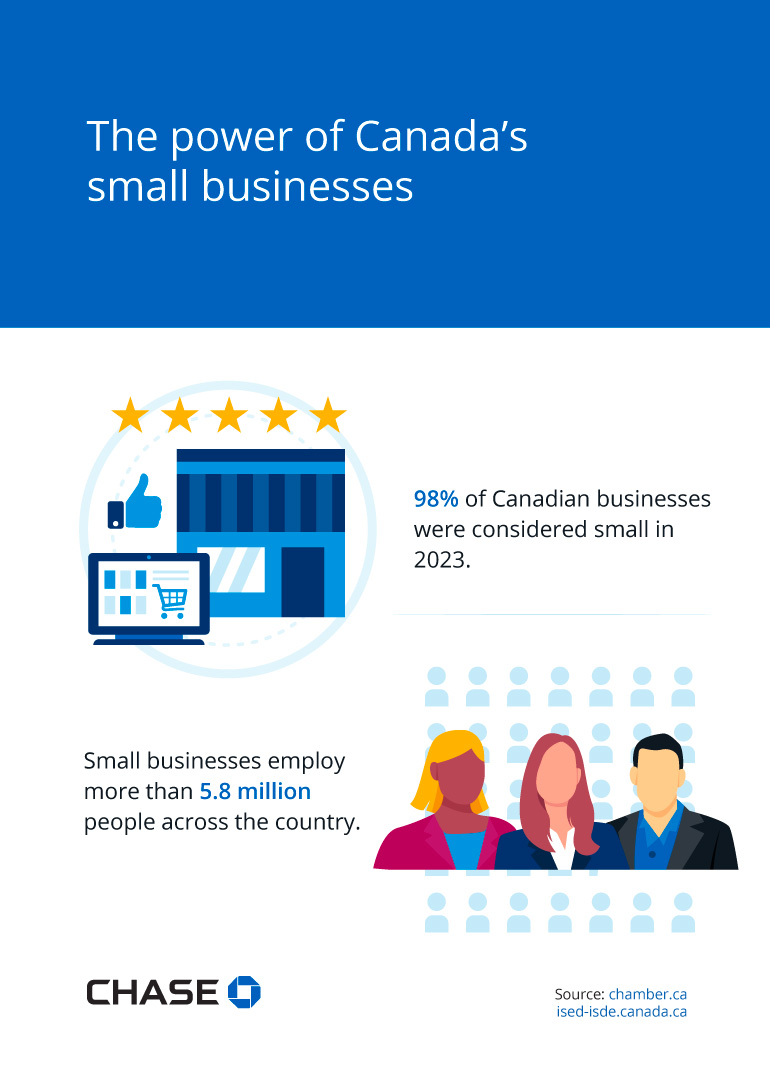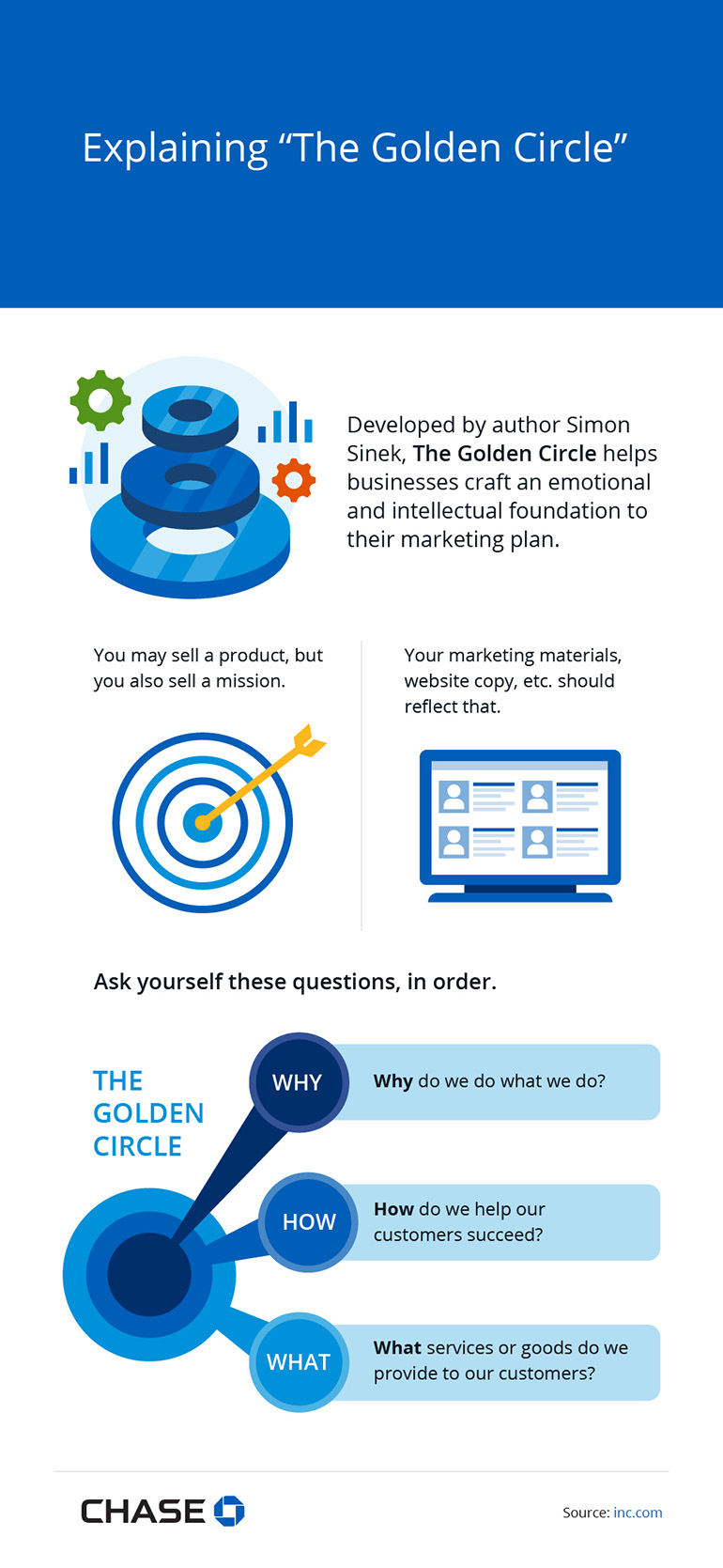How to promote your small business in Canada
By Jackie Lam

Small businesses are the economic backbone of Canada. According to the Government of Canada, there were 1.10 million businesses in Canada with paid employees in 2023. And most of these businesses (98%) are considered small. For a bit more context, small businesses employ 5.8 million people across the country, or 46.5% of the private labour force.
Small businesses in Canada are also quite diverse. As of 2024, Canada’s fastest growing industries include:
- Travel agencies (15.4% anticipated revenue growth from 2024–2025)
- Tour operators (12.5%)
- Scheduled air transportation (10.9%)
- Car wash and auto detailing (10.5%)
- Fast food restaurants (9.8%)
- E-commerce and online auctions (9.4%)
- Market research (9.2%)
- Boat building (8.8%)
- Optometrists (8.7%)
- Semiconductor and other electronic component manufacturing (8.6%)
According to the Canadian government, “Small businesses make significant contributions to the Canadian economy and play an important role in employing Canadians.” However, entrepreneurs are often faced with competing small businesses and challenges in their outreach efforts. If you’re one of these small business owners, you might be asking: What can an owner such as myself do to stand out in the crowd?
Thankfully, there are many ways you can promote your small business, no matter your size or budget.

These industries could mean big growth for small businesses…
- Travel agencies (15.4% anticipated revenue growth from 2024–2025)
- Tour operators (12.5%)
- Scheduled air transportation (10.9%)
- Car wash and auto detailing (10.5%)
- Fast food restaurants (9.8%)
- E-commerce and online auctions (9.4%)
- Market research (9.2%)
- Boat building (8.8%)
- Optometrists (8.7%)
- Semiconductor and other electronic component manufacturing (8.6%)
Sources:
Embrace technology
No matter what industry you're in, technology is key to promoting your business. If your business isn’t internet-savvy, you’re missing out on a large swath of potential customers. A great first step for small businesses is to set up a Google Business Profile page, which is 100% free. For businesses on a budget, it’s an easy way for potential customers to find you, learn about your business, find contact info and track down your hours of operation. Along those same lines, try to create a Yelp page for your business. This can help people discover you organically, as they're searching for shops or services that you offer, as well as read reviews from customers. Meanwhile, encourage your most loyal customers to give you a glowing review. This will help you gain trust with potential new customers.
Another way for your company to tap into tech is to operate an official website. Today, you might think that every company has its own homepage, but many business owners can become overwhelmed by the concept, thinking they lack the technical know-how.
But don’t worry, there are plenty of cost-effective, easy-to-use platforms that can help you create your own company website, boost your online presence and attract new customers.
Accept payments anywhere and everywhere
While most business owners are prepared for customers to find them, you should equip your business with every tool possible to discover new customers, encourage sales and make payment processing seamless. In other words, your customers should have every opportunity to offer payment, whether that be credit, debit or cash. Similarly, you should be prepared to close a sale anywhere: online, in-store, via social media, via phone. By diversifying how and where you can accept payments, your business will have multiple, operable revenue streams.
Build your social media pages
In tandem with your website, social media can be a fun way to hone your business’s online image. Yes, there are tons of options (Facebook, Instagram, X and TikTok, just to name a few), so it’s understandable if you're feeling unsure of where to start. First, consider your target audience, your industry and the services and products you offer. When it comes to social media, it's best to choose one or two platforms to build your house on, as they say. Then, you can branch out when ready.
If you're a service-oriented business targeted to younger customers, try posting advice-centric videos via TikTok. If your company is product-based and heavy on the brand look, then visually appealing imagery on Instagram may be a good place to start.
Do you have younger staff who are fluent in social media? Tap into that resource! You may be surprised by their creativity. Allowing employees to show off their personality will contribute to your brand’s overall authenticity online, and it could pay off when it comes to your bottom line.

98% of Canadian businesses were considered small in 2023.
Small businesses employ more than 5.8 million people across the country.
Sources:
Tap into existing marketing tools
If you have a payment processing system, make the most of it. Built-in marketing features can sometimes be integrated with your business software so you can create targeted marketing campaigns. These may include email marketing blasts, customer polls for word-of-mouth marketing or newsletter opt-ins.
Capitalize on the "Buy Local" movement
With changes in market behaviours in the past few years, such as the disruption in international supply chains, there has been a consumer trend toward buying local and supporting community spaces. According to Dan Kelly, President of the Canadian Federation of Independent Business, for every $100 spent on local, independently owned businesses, $66 stays in the local economy. For those concerned with the protection and preservation of our natural environment, staying local also cuts down on pollution.
Try to work the "buy local" angle into your marketing by pointing out what makes your business unique. You can emphasize that your company is independently owned and operated, or that it features unique products that showcase the character and history of your city or neighbourhood. If it is applicable to your business, you can point out that you utilize locally sourced ingredients. Indicate that you're proud to be a small business owner and are contributing to the local economy. People will appreciate your commitment to the community.
Embrace “The Golden Circle”
If you’re starting from square one, try to build your marketing plan around "The Golden Circle". This concept was developed by the British-American author Simon Sinek, and while it was intended for business-to-business (B2B) marketing, business-to-consumer (B2C) enterprises can also benefit from this approach.
Before crafting your marketing plan, Sinek implores business owners to think about the why, meaning, “Why do you do what you do?” You may sell a product, but you also sell a mission. Your marketing materials, website copy, etc. should reflect that.
Consider your internal motivations, and connect with your customers emotionally, intellectually or otherwise. Ask yourself, “Why does my small business exist in the first place?”
Zooming out, you should then think about the how. Ask yourself, “How do we help our customers succeed?” or “What kind of benefit do we offer to our customers?”
For example, if you run a small art gallery, you offer visitors wonder, awe and a dose of culture. If you run an accounting services firm, you offer financial security and peace of mind through your expertise.
Finally, after building that thematic foundation, approach the what. Ask yourself, “What services or goods does your small business provide?”
By examining your business with purpose, you can narrow in on your demographic, brand values and messaging, which can help you devise strategies to best market your company.

Developed by author Simon Sinek, The Golden Circle helps businesses craft an emotional and intellectual foundation to their marketing plan.
You may sell a product, but you also sell a mission.
Your marketing materials, website copy, etc. should reflect that.
Ask yourself these questions, in order.
- Why do we do what we do?
- How do we help our customers succeed?
- What services or goods do we provide to our customers?
Sources:
Look into influencer marketing
Partnering with the right influencer may also help with your company’s visibility. You'll want to find someone with the right audience and somewhat high social media engagement that's both organic and on the right platform to drive to your business. (Those million-follower accounts are probably too large for your small business, but there are plenty of “micro-influencers” who can highlight your services with a thorough, in-depth review or a quick, yet meaningful, positive mention.)
Facebook remains the most popular social media platform in Canada, and an influencer’s engagement is more important than their number of followers. Look to work with an influencer who is aligned with your brand as well as your target audience. Who knows? You could be one direct message (or DM, as they say) from a successful influencer marketing campaign.
Additionally, try and track down some influential figures in your community to try out your business and spread the word. Real-life word-of-mouth is still quite powerful for small businesses!
Update your website and optimize for e-commerce
If you have an existing website, make the most of it by seeking out avenues for optimization. Could your homepage use a more modern look? Maybe you'd like to refresh the aesthetic so it's more in line with your brand. Are images loading too slowly? Can customers view or even buy your products online? How do you accept online payments? These are all questions you should be asking yourself often.
If you do have an e-commerce business or online shop, make sure your site is easy to navigate with detailed product descriptions. Integrate your social media platforms into your website so fans of your products can give you a follow. And, conversely, be sure to have the link to your online shop all over your social media so you can direct web traffic to your website’s landing page. Optimizing your sales funnel from social media to your online shop is a great way to up your sales.
Ask for customer emails and start a virtual newsletter
Another quick tip is to make it as easy as possible for customers to opt in to your virtual newsletter. First, build a customer roster by asking your patrons (both online and in person) to provide an email address for the purposes of promotional outreach. Then, think about how an email campaign can help you with your business goals. For instance, you can create an email marketing sequence around a product launch, offering a small discount or free shipping to new or returning customers. You should also make sure that your emails are CASL-compliant for Canada.
To make things extra simple, try using an email distribution platform to send out newsletters and track results.
Monitor and reply to reviews
Actively monitoring and responding to customer reviews, comments and inquiries show that you care and can build trust. You can think of participating in online reviews as another line of communication. You can correct information, prevent any misrepresentation of your business and enhance your brand and company values.
It's important to engage with your customers to show that, as a business owner, you are open to feedback, paying attention to their needs and are seeking ways to improve your small business. Make a point to respond to reviews as soon as you can and make it clear that you're open to all types of comments.
Conclusion
Given the financial responsibilities of running a small business, you may feel like your marketing resources are limited. However, promoting your business relies on creativity, and if you’re passionate about what you do, you can accomplish quite a bit on a budget. The key is to align yourself with reliable institutions and diversify your efforts.
Growing a business is not a one-size-fits-all strategy, but if you try a combination of the factors listed above, you may be surprised by the results.